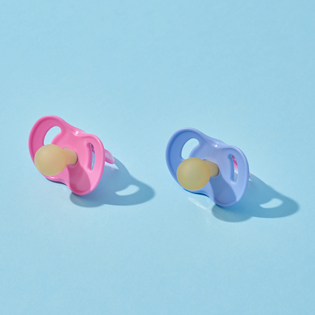Fact: Little kids love to run their hands along every surface inside the house — and outside it too. It's not unusual, of course, to explore in this way, but stepping on a rough-textured board or rubbing chubby fingers along the deck railing can cause a sliver of wood to embed in the skin (ouch!).
Fortunately, when it comes to splinter removal in toddlers and young children, the process is rather quick and pretty pain-free. Read on to learn how to get a splinter out so you don't risk an infection as well as when to call the doctor if that pesky piece is beyond reach.
How to get a splinter out
If there's a piece of wood under your toddler's skin, here's how to remove a splinter with tweezers:[1]
- Keep it clean. Suds your hands and the splinter area with soap and warm water, since this sliver has made an opening in the skin that could introduce infection-causing bacteria.
- Clean the tweezers. Wash the pair with soap and water, sterilize with rubbing alcohol and dry.
- Explain and distract. Speak calmly to your tot, and let her know you'll try to help. But if yours is upset, even screaming, put on a video or offer a small snack or treat while you work on removal.
- Get a good grip. If you can see part of the splinter sticking out, use the tweezers to grasp that part and pull gently in the direction that it went into the skin.
- Treat the boo-boo. Once the splinter is out, dab on some antibiotic ointment or petroleum jelly and cover with a bandage. As with any skin wound, watch for signs of infection like swelling, redness or pus.
How to get a deep splinter out
Sometimes a sliver of wood will become completely embedded so it's a good idea to learn how to remove a deep splinter you can't see. In this case, take a sterilized needle (cleaned with rubbing alcohol), and make a tiny opening in the very top layer of skin to expose the tip of the splinter.[2] A magnifying glass can come in handy here, as can a bright light.
Read This Next
Carefully slide the needle under the tip of the splinter to lift it up and make it accessible so that you can use tweezers (or the same needle) to pull it out. Need a hand? Teamwork makes this procedure even easier, so enlist another adult to handle one part, either the toddler distraction or the needle.
How to draw out a splinter
Curious about how to get a splinter out without tweezers? There are a few home remedies:
Tape
One of the gentlest (and least scary) options is plain old cellophane or duct tape. Simply tear off a small piece, press it gently over the splinter tip, and then pull off the tape in the direction that the splinter entered the skin. If the splinter isn't in deeply, it should stick to the tape and come right out.
Glue or honey
You can also try smearing a bit of white glue on the splinter, letting it dry, and then peeling it off. Or try smearing some manuka honey, touted as a natural antiseptic, on the area and bandaging it for a few hours. The honey will soften the skin and make it easier to slide the splinter out.
A soak with Epsom salt
There are two schools of thought when it comes to soaking the affected area. Some feel the wood sliver may expand, which means it'll be harder to remove the splinter. But others recommend soaking the hand or foot in a cup of Epsom salt and warm water for 10 minutes as the salt solution then pressures the splinter to the surface, so it's reachable by tweezers or a needle.
Keep in mind that once the splinter is removed, you should check that your child is up to date on her tetanus vaccine. While rare, a potentially serious infection could develop without tetanus protection.
Do splinters come out on their own?
Yes! In fact, a tiny splinter that's close to the skin's surface may not need any treatment at all. In this case, the sliver of wood will eventually work its way high enough that it comes out as the skin sheds. Check with your child about any pain she's feeling so you can determine whether waiting will work. But if she's really hurting, try one or more of the removal methods.
Other splinter removal methods
There are a number of other rumored methods that promise to draw out the splinter, like taping a piece of garlic, a raisin, potato or onion to the splinter, or creating a paste out of baking soda and water and letting it dry overnight. But these pantry methods could mean a painful splinter is left in for too long, upping the risk of infection. The bottom line: If a splinter is too deep to remove, call the pediatrician.
When to call a doctor
Most splinters in children are easily removed, but in some cases, you'll need to have a professional take care of it. Here's when you should seek medical attention:[3]
- The splinter is very large or deeply embedded.
- The splinter breaks off or it's lodged in (or near) your toddler's eyes.
- The area of skin looks infected (red, pus-like) or your child develops a fever
- There's a deep puncture wound, or your child's last tetanus shot was more than five years ago. (Call the doctor within 24 hours.)
- The object has a barb, like a fishhook, or it's a BB from a gun. (See the doctor right away.)
How to prevent splinters in toddlers
The best way to prevent splinters is to be vigilant about what your child handles, though this is a challenge since "exploration" is practically your toddler's middle name. Still, you can try to stave off potential sources of splinters by:
- Sanding rough surfaces. These include door edges, banisters and porch railings.
- Keeping woodworking separate. Steer your child clear of boards and random wood pieces.
- Wearing shoes. A good rule of thumb is to keep shoes on your sweetie when outside.
In a perfect world, everything your child touches would be smooth and splinter-free. Alas, accidents happen, especially to busy, inquisitive toddlers, so bring a cool head to any splinter situation you encounter and know that most are easily removed with little to no fuss.











































 Trending On What to Expect
Trending On What to Expect





